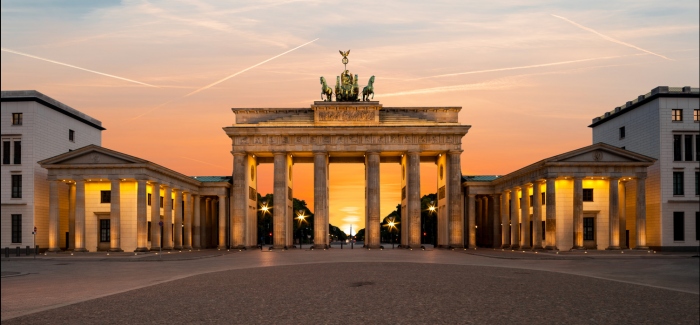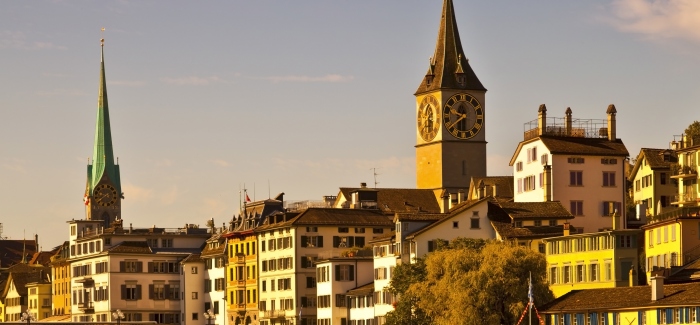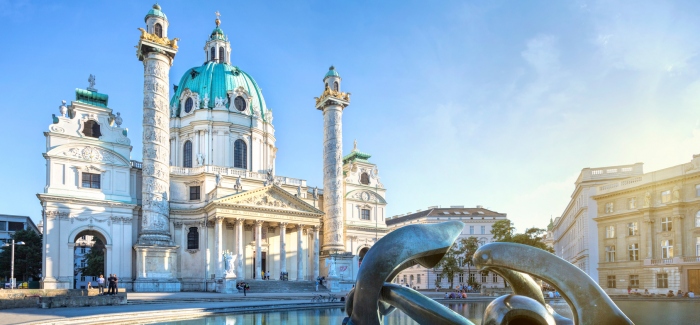Thinking of studying in Spain? Get inspired with our list of top 10 things to do in Spain.
Spain is the 10th most popular choice as a study destination, according to QS surveys of grad school applicants conducted between 2008 and 2013 at QS World Grad School Tour events. Many applicants cited “international recognition of qualifications” as the main reason for their choice of destination, and Spain certainly has its share of world-class universities.
The second most popular reason for choosing a study destination was “cultural interest and lifestyle”, and Spain’s sun-scorched climate, glittering beaches and historic cities that mix cosmopolitan bustle with echoes of bygone ages will have you saturated in culture – a bit like the tomato-drenched crowds at the annual tomato fight in Bunol, but not as messy.
In fact, with natural and architectural beauty everywhere you turn and a buzzing social atmosphere throughout the country, you’ll have so many things to do in Spain, you may wonder how to choose.
Read on for our top 10 choices...
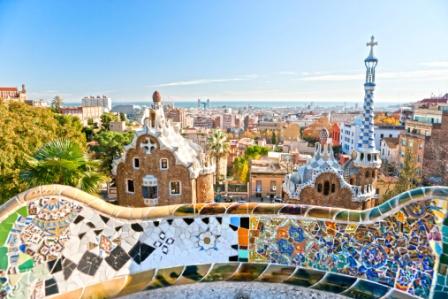 1. Visit Barcelona
1. Visit Barcelona
Nearest universities: Universitat Autónoma de Barcelona; University of Barcelona; University Pompeu Fabra; Universitat Politècnica de Catalunya; Barcelona Graduate School of Economics; Bes la Salle - Campus Barcelona; Escuela de Administración de Empresas (EAE); Fundació Universitat Oberta de Catalunya ; Universitat Internacional de Catalunya (UIC)
If you base your decision to study in Spain on its cultural attractions, then you should definitely visit Barcelona, whether or not you end up studying in the city. Barcelona’s character has been indelibly enhanced by the architect Antonio Gaudi, who stamped an art nouveau/surreal aspect on the cityscape with his visionary creations, to the extent that his name has almost become synonymous with the city.
Gaudi’s most famous creation is the unfinished cathedral, La Sagrada Familia. His other masterworks are dotted around the city, with famous landmarks including the Park Güell and the Casa Milà.
Other highlights for visitors to Barcelona include: La Boqueria, a huge and colorful indoor food market; the Picasso Museum; and the unmissable Fiesta De San Juan, a city-wide celebration of the summer solstice culminating in an all-night beach party.
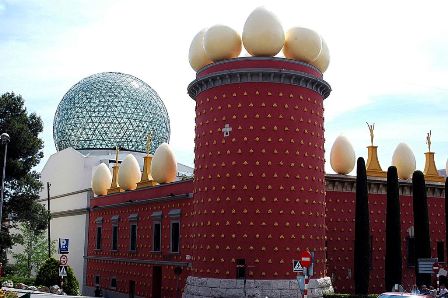 2. Visit a Dali museum
2. Visit a Dali museum
Salvador Dali, the famous surrealist painter, is another name strongly associated with Spain. Art students and fans should definitely visit a Dali museum, if not all four of them.
In Portlligat, Cadaqués, you will find the house where Dali lived from 1930-1982 with his wife Gala. After her death he took up residence at Púbol Castle in Girona and set about transforming the medieval building into a monument to his late wife. Both residences are now museums.
But the Dali Theatre-Museum in particular makes our list of the top 10 things to do in Spain for so many reasons: the eggs perched on top of the building, the Mae West room, the ceiling of the Palace of the Wind with its mind-blowing perspective of a figure seen as if you’re standing under its feet, and his experiments with 3D art, to name a few.
Dali even designed jewels, also on display at the Dali Theatre-Musem. His creations include a pair of ruby encrusted lips, a diamond waterfall and The Royal Heart, a gold heart with a ruby interior that really beats.
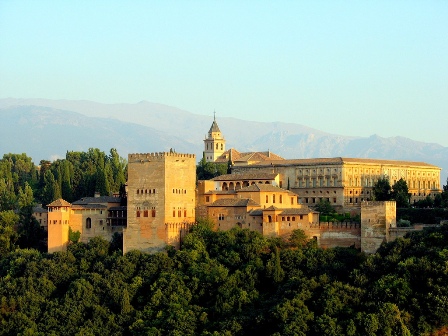 3. Explore the Alhambra
3. Explore the Alhambra
Nearest university: University of Granada
The Alhambra is a palace and fortress complex in Granada, Andalusia, that was originally an Islamic citadel and is now a UNESCO World Heritage Site.
The main highlights for visitors are the exotic Palacios Nazaries (the Nasrid Palaces), the Alcazaba (a 9th century citadel offering spectacular views of the Sierra Nevada Mountains), and the 16th century palace of Charles V, with its Baroque style contrasting with its Moorish surroundings. Also, don’t miss exploring the serene and colorful palace gardens.
You can’t miss the strong Muslim heritage if you explore the Alhambra, an influence that can be seen throughout Andalusia (but especially in Granada), stemming from a centuries-long period during the Middle Ages when the area was ruled by the Ottoman Empire. This period stretched from the invasion of the Iberian Peninsula in 711, through to the Muslim surrender of Granada to Christian forces in 1491.
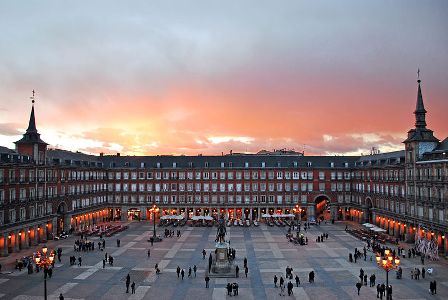 4. Party in Madrid
4. Party in Madrid
Nearest universities: Universidad Autónoma de Madrid; University Complutense Madrid; Universidad Carlos III de Madrid; Colegio Universitario de Estudios Financieros (Cunef); Escuela de Administración de Empresas (EAE); Universidad Nacional de Educación a Distancia; Universidad Francisco de Vitoria
Spain’s capital Madrid is famous for its legendary nightlife. ‘Madrilenos’ like to party throughout the night, coming home when you would normally be getting up for breakfast. So either put on your dancing shoes and join in, or have a more relaxed evening in the Puerta del Sol, over some late-night tapas and sangria.
During the daylight hours, Madrid is packed full of things to see and do. Check out the Prado Museum, one of the world’s greatest art galleries; head to the Gran Via for a bit of retail therapy; cheer on the mighty ‘galacticos’ of Real Madrid at the Estadio Santa Bernabeu stadium, or catch some of Spain’s best flamenco action at the Casa Patas.
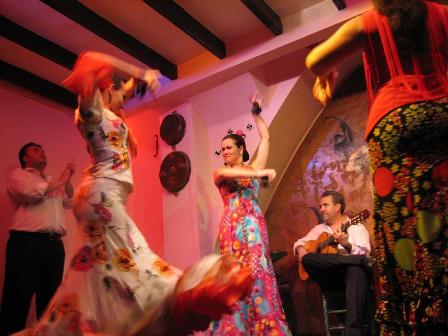 5. Experience the fiery culture of Seville
5. Experience the fiery culture of Seville
Nearest universities: University of Granada; Universidad de Huelva; Universidad de Sevilla
The home of flamenco and the capital of Andalusia, Seville is perhaps the most quintessentially Spanish of cities. It is famous for its extreme heat; summer temperatures regularly soar over 40°C (104°F), making it one of the hottest spots in Europe.
This climate is reflected in the hot-blooded and passionate culture for which the city is known: with fiery flamenco performances, dramatic fiestas, exuberant nightlife and lavish Catholic iconography, Seville is a city that seriously knows how to express itself. Seville also has a strong student culture, which means if you choose to study abroad in this extrovert city you are sure to be welcomed with open arms.
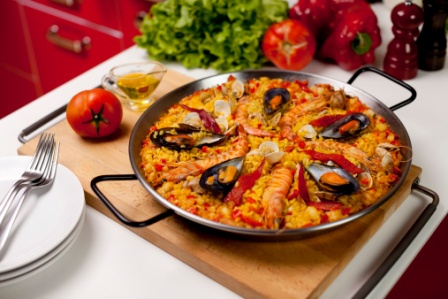 6. Eat and drink in Valencia
6. Eat and drink in Valencia
Nearest universities: Universidad Politècnica de Valencia; Universitat de Valencia
Valencia is the home of paella: a rich, spicy and brightly colored rice-based meal, traditionally served in a huge pan and teeming with fresh seafood. There are numerous restaurants throughout the city serving up the real deal – head down towards the beach in the evening and you’ll be spoilt for choice.
If you fancy a drink, you can do this extremely cheaply indeed; ask for a spirit in some of the smaller establishments, and the bartender will just keep on pouring until you say stop!
The city center’s highlights include the whitewashed Roman buildings of the Barrio del Carmen, a lavish baroque cathedral, the Moorish relics of the city’s Ottoman past, and the futuristic Ciudad de las Artes y las Ciencias complex.
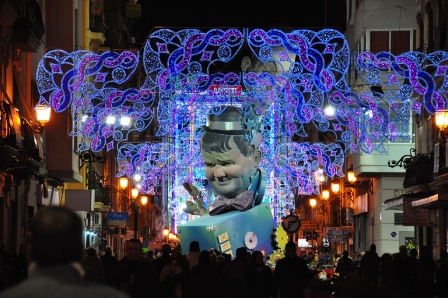 7. Go to a traditional Spanish fiesta
7. Go to a traditional Spanish fiesta
If you study in Spain, you will have endless opportunities to get involved in the fiestas (festivals) that are held throughout the year and the country – from huge, internationally famous extravaganzas to those held in tiny villages well off the tourist trail, all are steeped in centuries-old culture and mythology.
Perhaps the biggest and best-known Spanish fiestas are Valencia’s Las Fallas, the Running of the Bulls in Pamplona and Holy Week in Seville. Las Fallas attracts hundreds of thousands of revellers each year, who come to party for five days (and nights) in March. You will need some serious stamina or rocket-fuel coffee to see you through this one, unless you can sleep through the daily wake-up parade at 8am!
8. Get splattered at “La Tomatina”
Why not release some stress with a good old food fight? Thousands of people get splattered at the La Tomatina food fight in Bunol, near Valencia, each year. The fight, held on the last Wednesday in August, involves people chucking over-ripe tomatoes at each other, and generally getting very messy indeed. (Portable showers are provided!)
A charge of about US$15 was introduced in 2013 for the first time, but that didn’t deter people from participating in this truly unique event.
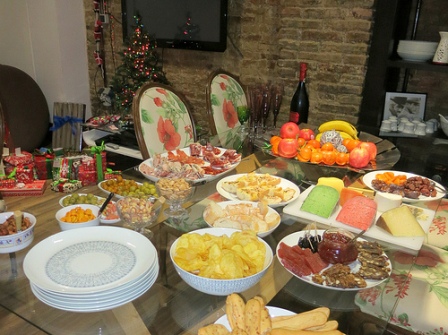 9. Indulge in tapas
9. Indulge in tapas
For those who aren’t familiar with tapas, it is basically a way of eating that means ordering a selection of small dishes that are shared among a group, so everyone samples lots of different dishes and flavors. This is ideal for getting to sample lots of different aspects of Spanish cuisine, as well as getting to know your new course-mates.
Tapas dishes cater for all preferences and persuasions. Carnivorous eyes will light up at the many varieties of ‘jamon’ (ham - ubiquitous throughout the country), Spanish meatballs and chorizo. Meanwhile vegetarians can enjoy a variety of roasted vegetables, grilled aubergines and the famous patatas bravas (fried potato chips served with paprika and mayonnaise). Seafood fans will be spoilt by a huge variety of prawn, sea bass, calamari, octopus and lobster-based delicacies.
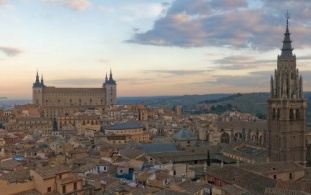 10. Marvel at Iberia’s ‘Imperial City’, Toledo
10. Marvel at Iberia’s ‘Imperial City’, Toledo
Nearest universities: Universidad Autónoma de Madrid; University Complutense Madrid; Universidad Carlos III de Madrid; Colegio Universitario de Estudios Financieros (Cunef); Escuela de Administración de Empresas (EAE); Universidad Nacional de Educación a Distancia; Universidad Francisco de Vitoria
Toledo, another UNESCO World Heritage Site, is one of Spain’s major tourist attractions. Situated just an hour from Madrid, it’s a popular day-trip for those based in the capital.
Attractions include the majestic San Servando castle, the 16th century Alcazar fortress and the oldest synagogue in Europe. But with over 100 monuments crammed into its labyrinthine historic center, the best way to explore Toledo may be to ditch the guidebook and just follow your nose – you couldn’t choose a more scenic place to get lost on a sunny day!
Once you’ve finished these top 10 things to do in Spain, try these:
- Hike the beautiful El Camino de Santiago pilgrim trail
- Expand your artistic horizons – the Guggenheim Museum in Bilbao, the Prado in Madrid, the Picasso museum in Barcelona, and the home of Salvador Dali, the father of surrealism
- Cool off in the rugged snowy mountains of Sierra Nevada
- Discover the beautiful islands of Majorca and Mallorca – and if you really want to party, head to Ibiza
- Bask in Basque culture; visit historic Bilbao
Spain's top universities by region
Alcalá de Henares: Universidad de Alcalá
Andalusia: University of Granada; Universidad de Sevilla
Aragon: Universidad de Zaragoza
Catalonia: Universitat Autónoma de Barcelona; University of Barcelona; University Pompeu Fabra; Universitat Politècnica de Catalunya
Galicia: Universidad de Santiago de Compostela
Madrid: Universidad Autónoma de Madrid; University Complutense Madrid; Universidad Carlos III de Madrid; Politècnica de Madrid
Murcia: University of Murcia
Pamplona: University of Navarra
Salamanca: University of Salamana
Valencia: Universidad Politècnica de Valencia; Universitat de Valencia










